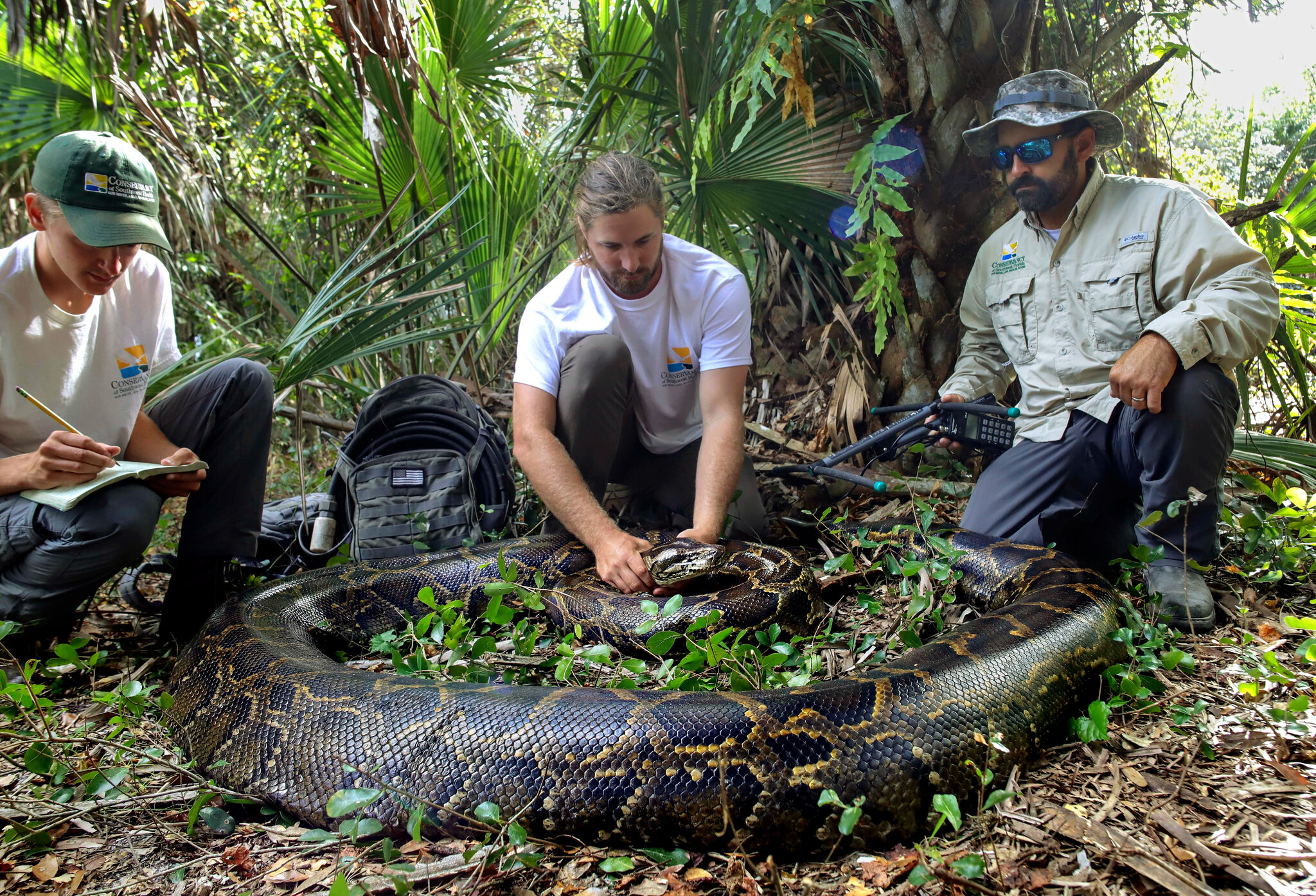In recent years, Florida has faced a significant problem with invasive Burmese pythons. These snakes, which can grow to be quite large and live for many years, have taken over many areas of the state. People often wonder, “Why don’t they just shoot the pythons in Florida?” While this question seems straightforward, the answer is a bit more complex. Let’s explore this topic in detail and understand the challenges, impacts, and potential solutions involved in dealing with this invasive species.
The Invasive Python Problem
To understand why shooting pythons isn’t a simple solution, we first need to look at what makes these snakes a problem in Florida. Burmese pythons are not native to the area. They were likely brought to the state as pets and, when they became too big or difficult to care for, some owners released them into the wild. This decision had serious consequences.
In Florida’s ecosystems, these pythons have no natural predators. This means they can reproduce quickly and grow large, often reaching lengths of over 15 feet! They eat a variety of animals, including birds, mammals, and even alligators. This predation disrupts local wildlife populations and can lead to declines in native species, which upsets the entire ecosystem. Also read Why Don’t They Just Shoot the Pythons in Florida
The Hunting Solution
Many people suggest that simply shooting the pythons would be an easy way to control their population. After all, if these snakes are causing so much trouble, why not just get rid of them? However, the reality of hunting pythons is not as simple as it sounds.
First, finding pythons in the wild can be quite difficult. They are masters of camouflage, blending into their surroundings with their scales, which makes them hard to spot. This means that even skilled hunters might spend hours searching without seeing any snakes. Additionally, the best time to find and shoot pythons is at night when they are more active, which can pose safety risks for hunters.
Legal and Regulatory Challenges
Another reason why simply shooting pythons isn’t a straightforward answer is due to laws and regulations. In Florida, there are specific guidelines regarding hunting wildlife. These regulations are in place to ensure safety and preserve natural habitats. While Burmese pythons are classified as invasive and can be hunted, there are still rules about where and how to hunt them.
For instance, hunting in certain protected areas may be restricted, which limits the locations where people can go to hunt these snakes. Furthermore, those who wish to hunt pythons often need permits or special training to do so, which can create additional barriers.
The Ethics of Shooting Pythons
Another layer to this issue is the ethical consideration of shooting an animal, even one that is invasive. Many people have differing opinions on how to handle wildlife. Some argue that killing any animal is cruel, regardless of the species. Others believe that because pythons threaten local wildlife, controlling their population is necessary.
This ethical debate adds complexity to the question of why they don’t just shoot the pythons in Florida. For some, hunting might not feel like the right answer, leading to discussions about more humane methods of control.
Alternative Control Methods
Instead of shooting, wildlife officials in Florida are exploring other methods to control the python population. One popular method is trapping. Traps can be placed in areas where pythons are frequently spotted. When a python enters a trap, it can be safely captured and removed from the environment.
This method is often seen as more effective than hunting because traps can continuously catch snakes, even when no hunters are present. Additionally, trapping does not rely on the skill or luck of hunters, making it a more reliable approach to reducing python numbers.
Public Awareness and Involvement
Public involvement is crucial in the fight against invasive pythons. Many organizations and communities encourage people to report sightings of these snakes. This information helps wildlife officials understand where pythons are located and how to strategize their removal.
Moreover, there have been events and competitions, such as the Python Challenge, where people can participate in hunting these snakes while also raising awareness about the issue. These events can educate the public on the dangers of invasive species and the importance of protecting Florida’s natural ecosystems.
The Impact on Native Species
As we think about why they don’t just shoot the pythons in Florida, it’s essential to consider the broader impact of these snakes on the environment. Pythons are not just a nuisance; they pose a real threat to many native species. Birds, small mammals, and even some reptiles are at risk.
For example, researchers have found significant declines in populations of certain animals, like rabbits and raccoons, in areas heavily populated by pythons. These declines can lead to imbalances in the ecosystem, affecting everything from plant life to predator-prey relationships.
The Role of Ecosystem Balance
Ecosystem balance is a critical concept when discussing invasive species like pythons. In nature, all creatures have a role to play. When an invasive species enters an environment, it can disrupt this balance. Pythons eat animals that would normally keep populations in check, leading to overpopulation of some species and extinction of others.
By addressing the python issue, we aim to restore balance to Florida’s ecosystems. This means finding ways to manage the python population effectively without resorting to drastic measures like widespread shooting, which could lead to other unintended consequences.
Community Solutions and Involvement
In Florida, communities are stepping up to tackle the python problem. Local groups are organizing clean-up events, educational workshops, and even training sessions for those interested in learning how to safely capture and remove pythons.
These community efforts not only help control the python population but also foster a sense of responsibility among residents. When people understand the issues facing their local environment, they are more likely to take action and contribute to solutions. This collective effort is crucial in managing invasive species.
Future Considerations
As we look to the future, it’s clear that addressing the python problem will require ongoing effort and collaboration. Scientists, wildlife officials, and communities must work together to develop effective strategies. Research into the best methods for control and removal continues, and new technologies may emerge that help manage invasive species more effectively.
Additionally, continued public education about the dangers of releasing pets into the wild is vital. Preventing the introduction of new invasive species is just as important as managing those already present.
Conclusion
So, why don’t they just shoot the pythons in Florida? The answer is multifaceted. While it might seem like a straightforward solution, the challenges of finding, legally hunting, and ethically addressing the issue complicate matters. Instead, a combination of trapping, public involvement, and community education offers a more effective and responsible approach to managing the python population.
As Florida continues to deal with this invasive species, it will take teamwork and innovative thinking to ensure the state’s ecosystems remain healthy and balanced. Understanding the complexity of this issue helps us appreciate the efforts being made and the importance of caring for our environment.





